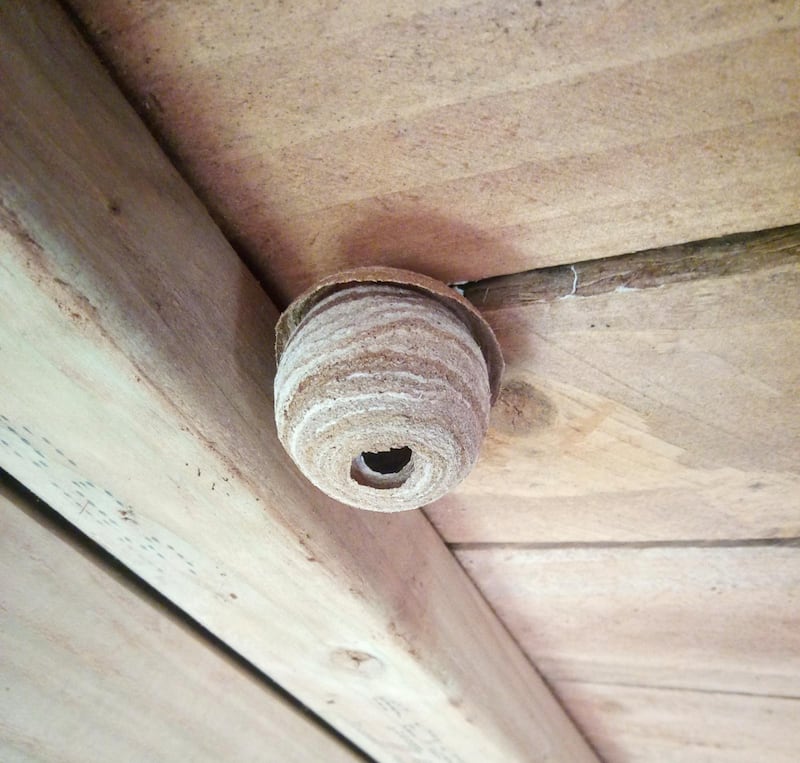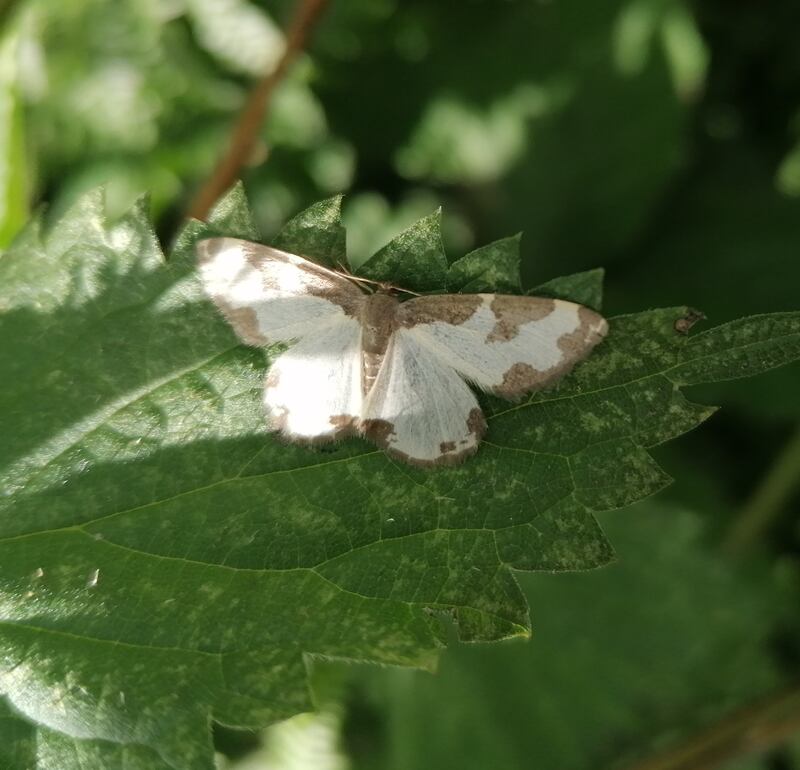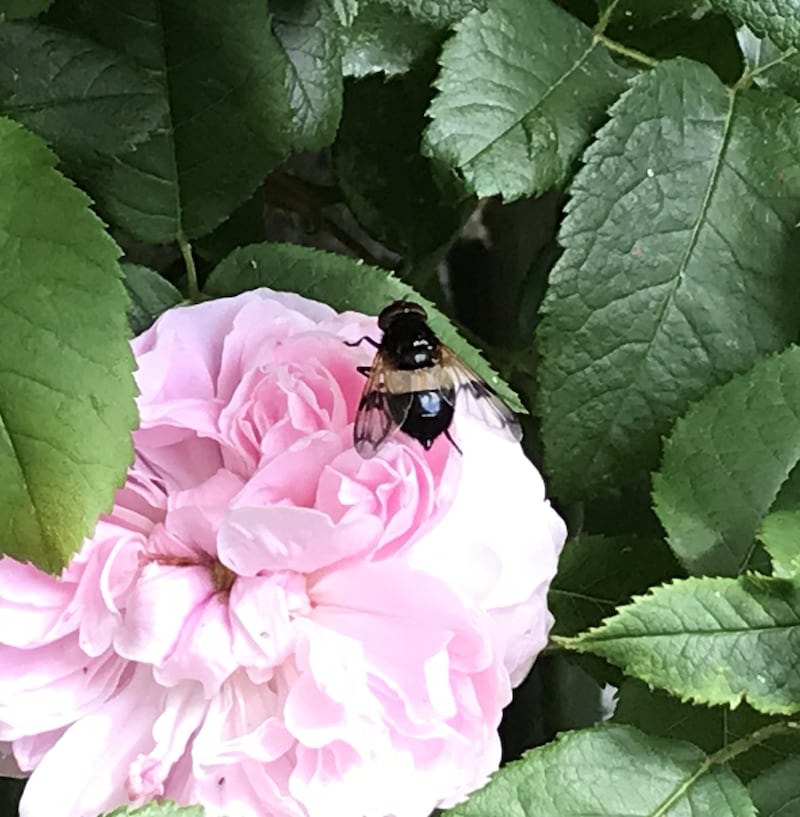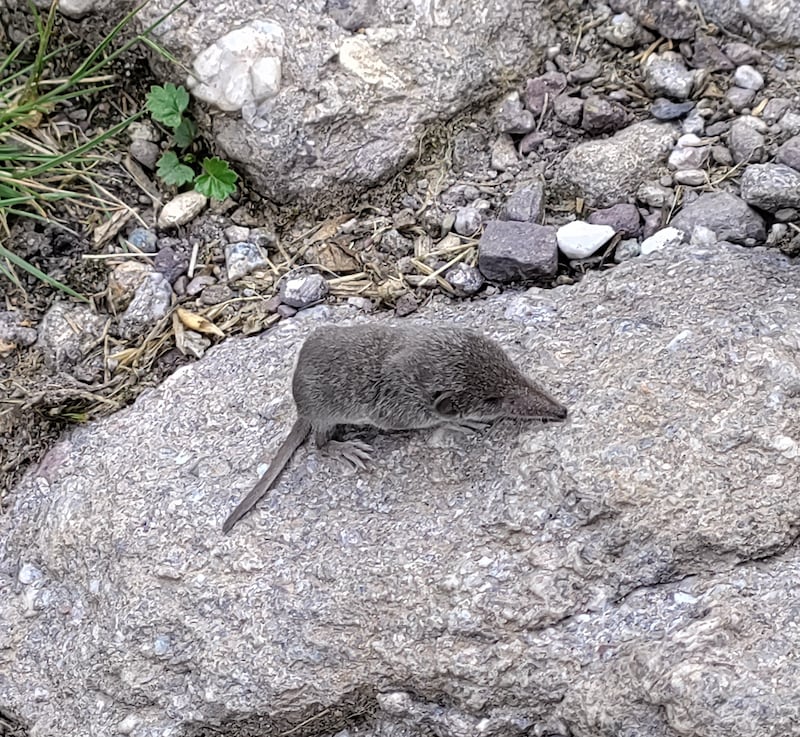We first heard these owlets begging on June 12th. We returned to the area the next night and eventually found the three owlets calling (each had their own distinctive sound). As the days went by, they got more adventurous and would fly from tree to tree. We were lucky to have had them in the area for almost six weeks. – Fiona Keane, Dublin
This is a lovely picture of three young long-eared owls. We have two breeding species of owls and the long-eared is the more common. It can occur where there are small stands of trees to nest in with open countryside nearby over which to hunt at night for mice and rats. While the young fledge from the nest after 30 days, they hang around demanding food from the parents for considerably longer, with begging calls reminiscent of a squeaky gate. The head feather tufts, which look like ears but are not, are only raised when the owl is alarmed or during courtship.

My daughter, who lives nearby, sent me the attached photo for identification. I said it might be a ladybird, but if it is I’ve never seen one like it before. – Frank Curran, Co Kildare
You are on the money – it is a ladybird all right. We have 19 Irish species, only some of which are red with black spots. This one is the cream-spot ladybird, a small maroon-coloured one with 14 cream spots. It is widespread and lives on deciduous trees where it feeds on aphids.
READ MORE

Just observed this in the roof of the garden shed and presume it’s a spider’s nest. A wonderful example of nature’s architecture. – Siobhan Keogh, Co Dublin.
I have news for you – it is a wasps’ nest made of the paper that wasps create by chewing up timber. Spiders lay their eggs in tiny (by comparison) balls of white web. Your nest will grow to the size of a football and will be a home for up to 40,000 wasps before being abandoned at the end of October, when they all have died off. It will never be used again after that.

This trés jolie micro moth requires identification. Can you oblige? – Paul Dunne, Co Galway.
Micro moths have forewings 10mm or less in length. This clouded border moth has a forewing of between 11 and 14mm and so is a macro moth, part of the Geometrid group. The caterpillars feed on poplars, willows and hazel.

This insect was on my rose bush. Can you name it for me please? – Richard Doyle, Co Dublin
The large eyes and just one pair of wings proclaim this to be a fly rather than a bee, which has two pairs of wings and smaller eyes. It is a pied hoverfly (Volucella pellucens), whose larvae are scavengers in the nests of the common wasp. Adults visit flowers to feed on nectar.

We found this little fella at the bottom of Kilclooney (Fauscoum) Mountain, in the Comeragh Mountains, Co Waterford. It was about 2 inches long. Some kind of shrew, we guess. – John Kelly, Co Dublin.
It is a shrew all right, as evidenced by the long, pointed snout – but which one? We now have two shrews in Ireland, the native pygmy shrew and the greater white-toothed shrew, which is a recent arrival. Its presence here was discovered in 2007 from the pellets of birds of prey. The pygmy shrew has a head and body length of 40-60mm, while the other one is 60-90mm long. So if you are sure of the 2-inch measurement, it was a pygmy shrew, which has red-tipped teeth.
Please submit your nature query, observation, or photo with a location, via irishtimes.com/eyeonnature













